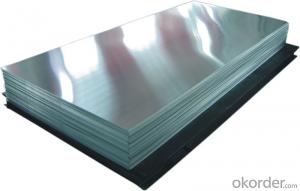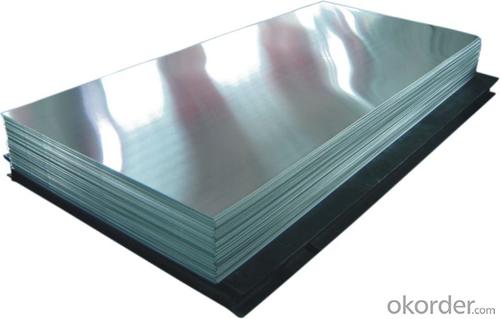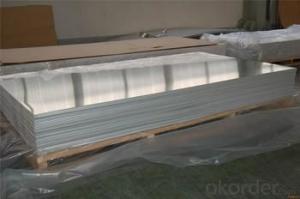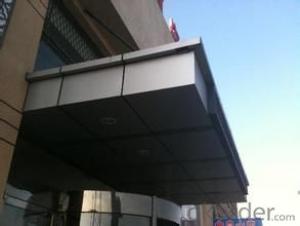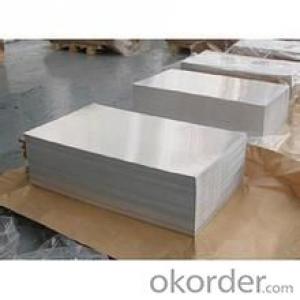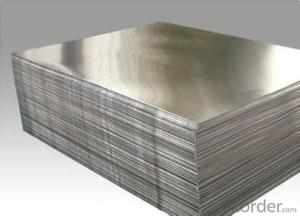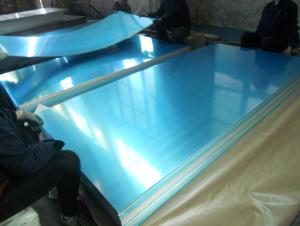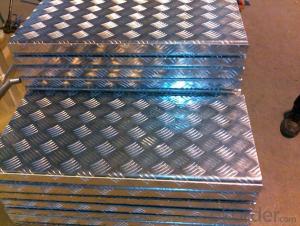Mill Finish Aluminum Plate - Sublimation Aluminum Sheets India
- Loading Port:
- Shanghai
- Payment Terms:
- TT OR LC
- Min Order Qty:
- 5 m.t.
- Supply Capability:
- 100000 m.t./month
OKorder Service Pledge
OKorder Financial Service
You Might Also Like
1.Structure of Mill Finish Alu Plate:
Mill Finish Alu Plate is designed for many field such as electronics, instruments, lighting decoration, packing industry, and house decoration, curtain wall, honeycomb-core panel, sandwich panel, aluminum composite panel, aluminum composite pipe etc.. Mill Finish Alu Plate is hard and everlasting under the blazing sun. You can choose the alloys as your habitation and we will do our best to meet your requests.
2.Main Features of the Mill Finish Alu Plate :
• Smooth surface
• High manufacturing accuracy
• High strength of extension and yield
• Well packaged
3. Mill Finish Alu Plate
Alloy: | AA1050, 1060, 1070, 1100, 3003, 3004, 3005, 3105, 5052, 5083, 5754, 8011, 8006 |
Temper: | H14, H16, H18, H22, H24, H26, H32, O/F |
Thickness: | 0.2-100mm |
Width: | 30mm-1700mm |

4. Production of Mill Finish Alu Plate
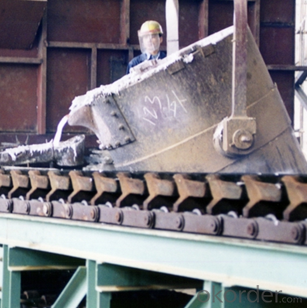
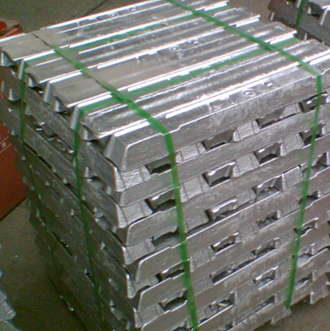
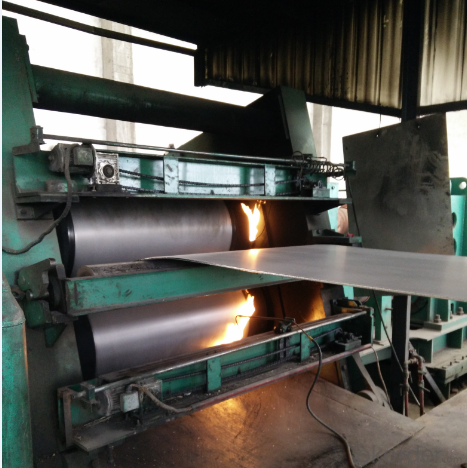

5.FAQ
We have organized several common questions for our clients,may help you sincerely:
① How about your company?
A world class manufacturer & supplier of aluminum coil and alloy blanks. Aluminum production base is comprised of 18 aluminum annealers, 10 coil and foil mills, 4 continuous production lines, 2 hot rolling production line and 3 prepainted lines.
Export 5000 tons per month to Asia, America and Middle East. Always do the best for our clients.
②Can you guarantee the quality of the products?
We are responsible for the quality of materials to get a long-term cooperation with clients in a reasonable period of time and we are glad to arrange and coordinate any third party inspection for you.
③What is the delivery time after purchase?
35 day after receiving client’s deposit or correct LC
- Q: How does the surface finish of aluminum sheet affect its cleaning requirements?
- The cleaning requirements of aluminum sheet are significantly influenced by its surface finish. Various surface finishes, such as mill finish, brushed finish, or anodized finish, can impact how dirt, grime, and other contaminants adhere to the surface. Smooth and polished surface finishes like brushed or anodized are generally more resistant to dirt and stains, making them simpler to clean. These finishes have a lower surface roughness, resulting in fewer areas for dirt particles to stick to. As a result, they can be effectively cleaned using gentle cleaning solutions or even just water and a soft cloth. Conversely, aluminum sheets with a mill finish or a rougher surface may require more rigorous cleaning methods. The higher surface roughness of these finishes can create more areas for dirt and grime to become trapped, making it more difficult to remove them with basic cleaning techniques. In such cases, more aggressive cleaning solutions or abrasive cleaning tools may be necessary to eliminate stubborn stains or dirt particles. It should be noted that the specific cleaning requirements for aluminum sheet also depend on the type and severity of the contaminants present. For example, if the aluminum sheet comes into contact with harsh chemicals or corrosive substances, special cleaning methods may be needed to ensure complete removal and prevent any potential damage. In conclusion, the surface finish of aluminum sheet directly affects the cleaning requirements. Smoother and polished finishes are generally easier to clean due to their lower surface roughness, while rougher finishes may require more rigorous cleaning methods. Understanding the surface finish of aluminum sheet is crucial in determining the most suitable cleaning techniques to maintain its appearance and functionality.
- Q: This question asks for the cost of an aluminum sheet.
- <p>The cost of aluminum sheets can vary significantly based on factors such as thickness, grade, surface finish, and market conditions. As of my last update, the price range for aluminum sheets could be anywhere from $0.50 to $5 per pound, but this is subject to change. For the most accurate and current pricing, it's best to check with suppliers or on metal exchange platforms, as prices can fluctuate daily. Always consider the specific requirements of your project to determine the exact type and grade of aluminum needed, which will also affect the cost.</p>
- Q: What is the main influence of the spacing?What are the main effects of spacing?
- Thermal explosion is related to a lot of factors. As to how much impact the lining board has on the thermal explosion, it's really impossible to speak of it. I think it has very little influence
- Q: How is the strength and durability of aluminum sheets determined?
- The determination of the strength and durability of aluminum sheets involves the utilization of various testing methods and parameters. A key factor in establishing the strength of these sheets is their alloy composition. Different compositions of alloys possess different levels of strength, and the addition of certain elements to the aluminum can enhance its strength properties. In order to assess the strength of aluminum sheets, the commonly employed method is tensile testing. This procedure entails subjecting a sample of the sheet to tension until it fractures. Throughout the test, the load and deformation are measured, and the ultimate tensile strength (UTS) and yield strength are established. The UTS signifies the maximum amount of stress that the sheet can endure before failure, whereas the yield strength is the stress at which the material begins to deform plastically. The thickness of aluminum sheets is another crucial consideration when determining their strength and durability. Generally, thicker sheets tend to exhibit greater strength and durability compared to thinner ones due to the increased cross-sectional area that contributes to their load-bearing capacity. Apart from alloy composition and thickness, the strength and durability of aluminum sheets are also influenced by the manufacturing process. Factors such as rolling and heat treatment have the ability to alter the microstructure of the aluminum, thereby affecting its mechanical properties. Effective control of these processes is essential in order to ensure consistent strength and durability across all sheets. Moreover, the resistance to corrosion is often evaluated for aluminum sheets. Aluminum naturally forms a protective oxide layer, which enhances its resistance to corrosion. However, specific coatings or treatments can be applied to further enhance this resistance, depending on the intended application. In conclusion, the determination of the strength and durability of aluminum sheets is achieved through a combination of factors including alloy composition, thickness, manufacturing processes, and testing methods such as tensile testing. These factors collectively govern the mechanical properties and resistance of aluminum sheets to various forms of stress, rendering them suitable for a wide array of applications.
- Q: i've been looking at stove top espresso coffee makers and they are all made of either aluminum or stainless steel. so i wonder is one metal any better than the other as far as coffee makers go? i thought before i actually buy one i'd like to hear from you - do you have a stove top espresso maker? what metal is it and what do you think of it? looking forward to reading your thoughts - thanks everyone!cheers!
- stainless steel is heavier and holds onto heat longer its also non-reactive aluminum can react to acids, changing flavors, and coffee has acids, so this could affect the taste.
- Q: Can aluminum sheets be used for reflective purposes?
- Yes, aluminum sheets can be used for reflective purposes due to their high reflectivity and low absorption of light.
- Q: Can aluminum sheets be perforated?
- Indeed, it is possible to perforate aluminum sheets. Perforating entails either punching holes or generating a pattern of holes in a material. Aluminum, being a flexible and adaptable metal, can be easily perforated through a variety of techniques like punching, drilling, or laser cutting. The perforation of aluminum sheets can have numerous applications, including facilitating airflow, reducing weight, improving aesthetics, or constructing filtration systems. The dimensions, form, and layout of the perforations can be tailored to satisfy particular demands and design preferences. In summary, perforating aluminum sheets can effectively enhance their functionality and visual allure.
- Q: I wish to purchase an 8' step ladder as well as a medium length extension ladder. What are the pros and cons of aluminum vs. fiberglass?
- Aluminum Vs Fiberglass Ladder
- Q: Is aluminum sheet recyclable?
- Yes, aluminum sheet is highly recyclable. Aluminum is one of the most sustainable and environmentally friendly materials, as it can be recycled indefinitely without losing its quality. The recycling process of aluminum sheet involves melting it down to its liquid form, which requires significantly less energy compared to the production of primary aluminum from raw materials. Recycling aluminum sheet not only conserves natural resources but also reduces greenhouse gas emissions and saves energy. It is estimated that recycling one ton of aluminum sheet saves about nine tons of CO2 emissions. Therefore, aluminum sheet recycling is not only economically viable but also an essential practice for maintaining a sustainable and eco-friendly environment.
- Q: iron-based alloys over aluminum in structural members of bridges and buildings?
- Aluminum generally has a better strength-to-weight-ratio. Steel alloys are still used in some of the parts of a typical aircraft, where tensile strength and toughness are the major considerations, over weight. The landing gear, bolts and pins, hinges, bearings, for example. Steel is used for bridges and buildings, because it's a lot *cheaper* than aluminum, and saving weight isn't nearly as critical as it is in aircraft. Steel is stiffer than aluminum, and It's easier and cheaper to make reliable welds in steel as well. Welding aluminum tends to be time consuming and expensive.
Send your message to us
Mill Finish Aluminum Plate - Sublimation Aluminum Sheets India
- Loading Port:
- Shanghai
- Payment Terms:
- TT OR LC
- Min Order Qty:
- 5 m.t.
- Supply Capability:
- 100000 m.t./month
OKorder Service Pledge
OKorder Financial Service
Similar products
Hot products
Hot Searches
Related keywords
